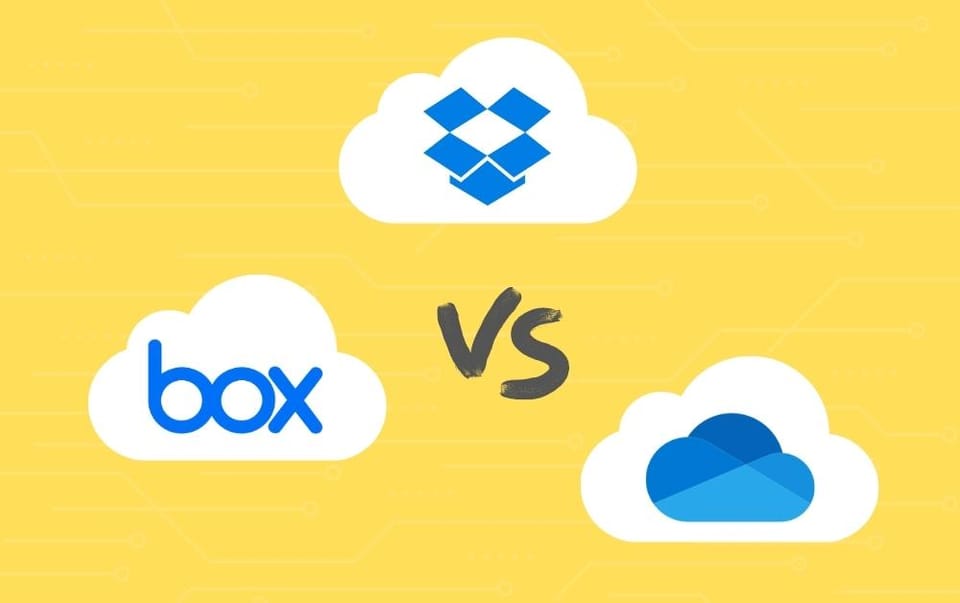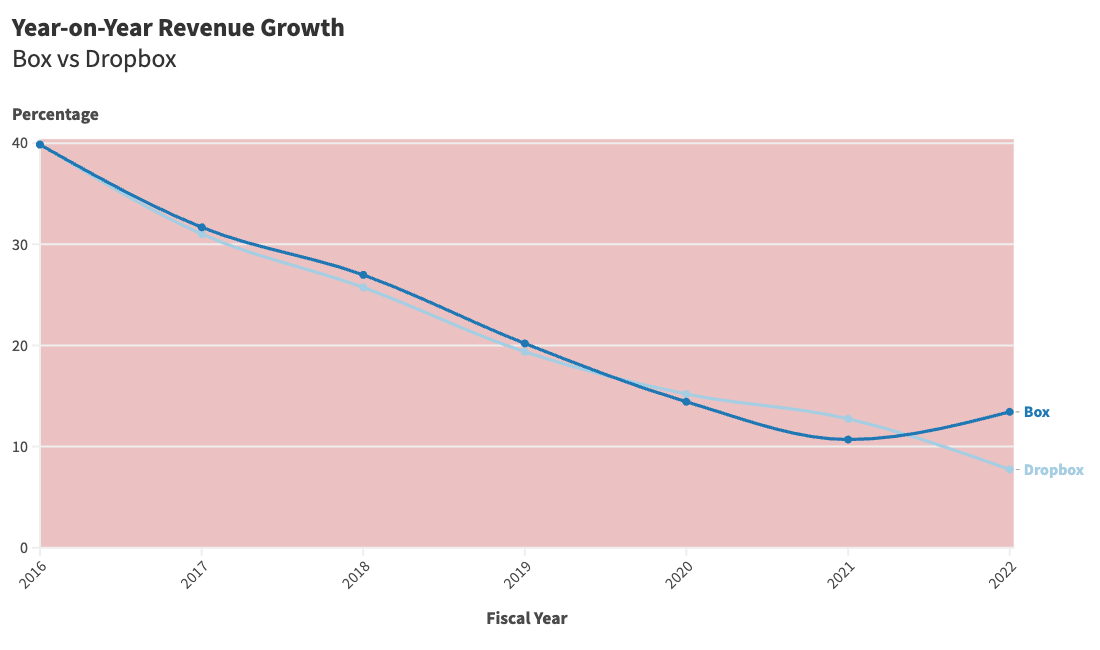Dropbox and Box: A Tale of Two Boxes

What does Dropbox and Box have in common, other than the commonality in nomenclature and business model? Hint: something to do with Microsoft.
Tracing their origins, Box was established in 2004, preceding Dropbox, which entered the market in 2007. Initially, both companies catered to the B2C market, offering file storage and link sharing services. But Box soon arrived at the juncture to decide whether they should stay in the B2C space or pivot to B2B segment, and chose the latter. Dropbox, on the other hand, maintained its B2C orientation before eventually expanding into the B2B domain.
This strategic divergence has led to differing strengths and market positions. Box has developed a more robust enterprise offering, gaining traction in industries with stringent regulatory requirements, such as financial services, government sectors, and natural sciences. An important point to note here is that, as an enterprise solution, Box is first and foremost a security company, which explains why they are very popular among customers from such sectors.
Dropbox, conversely, has retained a strong foothold in the consumer and SMB markets, boasting a global user base of over 700 million, with approximately 4% converting to paid customers.
Both were once a darling from the Silicon Valley, growing at well over 30%. However, their growth has slowed down significantly in the last couple of years, at less than ⅓ of their peak. What happened?

Answer: Microsoft 365.
In 2017, Microsoft introduced Teams and made a slick move in bundling all of Teams, OneDrive, Sharepoint, World, Excel, Powerpoint and so on as a single M365 bundle. From a cost perspective, a customer could be in a position where the per seat cost for Dropbox/Box is higher than the entire M365 bundle. If you are a business owner or the CIO, it is really difficult to justify the extra spend if the M365 bundle gets the job done (and it does).
What’s more. When you are selling against Microsoft, you are not just selling against Satya Nadella and his team; you are selling against the entire Microsoft partner ecosystem. For every dollar that Microsoft makes, partners generate $9 of revenue by selling additional products and services.
On the flip side, when Microsoft is selling, they are selling not just what they have today, but they are selling a product roadmap. They can walk into a meeting with a customer, and say “Yes we know Dropbox/Box has features X, Y and Z, but trust us, we are also developing these and will have these ready soon.” They are the largest software company in the world; it’s hard for a customer not to trust them right?
One additional point about Dropbox. They started as a dominant player in the B2C space and only much later began their upmarket sales motion. In going upmarket, there’s simply no greenfield. Every single business beyond a certain size will have a storage solution, whether it's on-premise or in the cloud, whether it's OneDrive or Box. In situations like that it becomes tremendously difficult to convince a customer to switch. A typical customer will be: “Okay, Dropbox seems nice but we are already using OneDrive and it gets the job done.”
In an effort to seek growth, both Dropbox and Box have evolved beyond simple storage, embracing collaboration features like e-signatures and document editing. However, the collaboration space is already crowded, with Microsoft 365 dominating the enterprise and a host of competitors like Google, Asana, and Notion vying for attention in the SMB segment.
Recently, both companies have integrated AI capabilities into their primary offerings. Jury is still out on whether this integration of AI will significantly alter the landscape.
